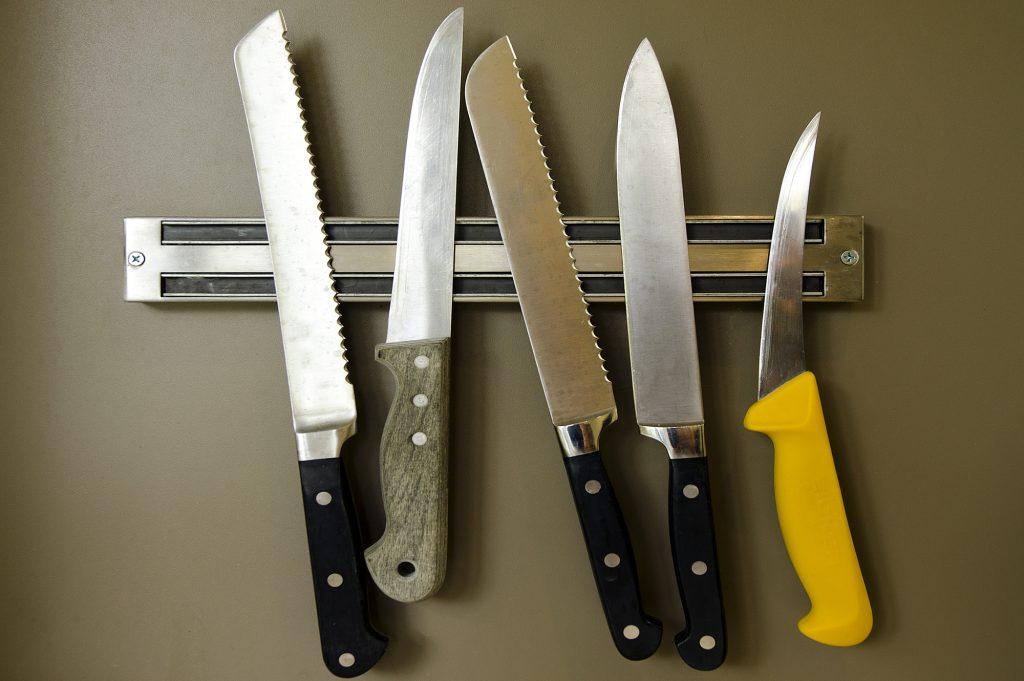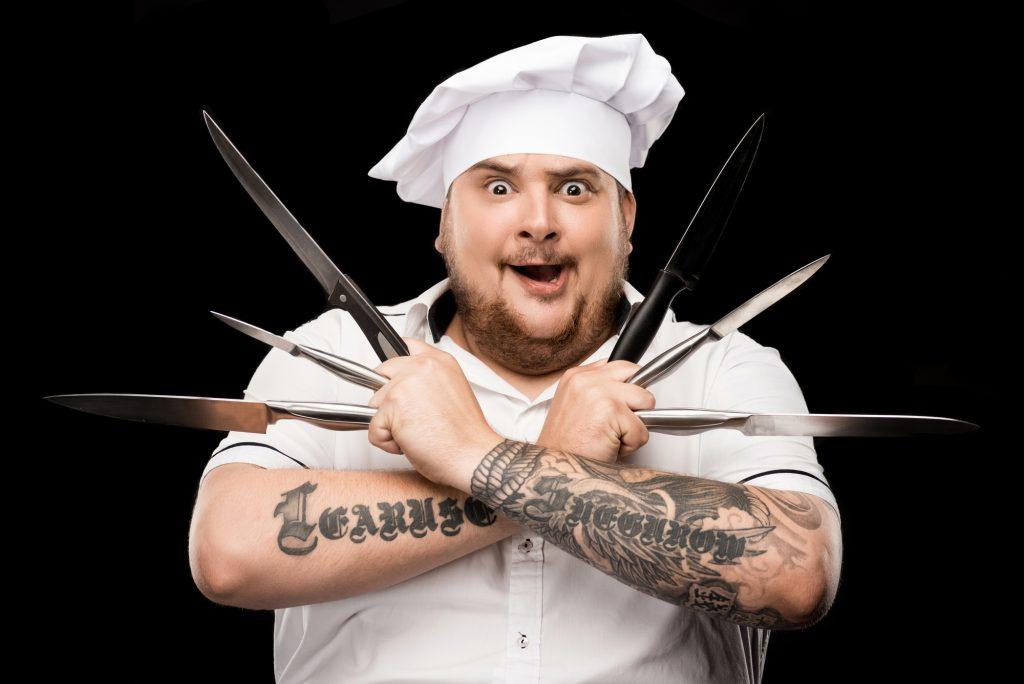Do you love spending time in the kitchen, preparing delicious meals for your friends and family? Or are you just starting out on your culinary journey and need some help choosing the right kitchen knife for you? Either way, this guide is for you. In this blog post, we will discuss everything you need to know about kitchen knives – from how to choose the right one, to how to care for it properly. So whether you’re a seasoned pro or just starting out, read on for some valuable advice!
The first thing to remember is that it makes a difference whether you want to buy a knife for home use or for your work as a chef. The reason for this is very simple: whereas at home we pick up our knife once a day and put it away after 10-20 minutes of work, a chef can spend 6-8-10 hours a day wielding a knife. Not to mention the fact that a chef may need several specific knives for his work: from flexible filleting knives to cleavers. Let’s face it, you would rarely touch these at home. To help you choose the most suitable tool, let’s first look at the knife itself—the steel.
Steel Knife
Since I’ve become more involved in cooking, including knife use, I’ve had to learn a little more about steel. Steel used to be just an alloy of carbon and iron, but nowadays it contains many more metals. Some metals help steel resist rust, while others improve wear resistance or hardenability.
Stainless blades and carbon steel blades
Carbon steel blades, as their name suggests, are made from an alloy of carbon and iron (and contain only a very small amount of other metals, which are more necessary for the manufacturing process). The resulting blade is much harder, more brittle, sharper than its stainless counterpart, and much easier to sharpen. On the other hand, it is prone to oxidation and therefore requires careful maintenance. Stainless steels, on the other hand, contain at least 13% chromium, which inhibits oxidation, if not completely. Yes, you read that right: stainless steel is not completely stainless. Even blades with 20% chromium content can oxidize (in extreme conditions e.g. seawater), although these are mostly surface oxidations that do not affect the use of the knife, but rather become aesthetic defects. As stainless steel is more common, the focus is more on this. Besides carbon, stainless steels also contain chromium, manganese, vanadium, tungsten, nickel, molybdenum, and silicon. These have different roles: some metals are responsible for hardenability and wear resistance, others for corrosion resistance, and others for the fine grain structure of the blade.
What do the numbers on the steel knives mean?
You may have come across a series of letters and numbers on your knife following the branding. For example, Wüsthof X50CrMoV15. It’s the steel’s identification mark. This is how you know what alloy you are talking about. The first number indicates the percentage of carbon in steel. The following letters are the alloying elements in descending order: so the alloying elements.
But which metal is good for what exactly?
Carbon: This is determined by its use: carbon is responsible for the hardness of the steel.
Chromium: As mentioned above, chromium is responsible for corrosion resistance, wear resistance, and hardenability. Stainless steels contain at least 13% chromium. Cr.
Manganese: Wear resistance and hardenability. Mark: Mn
Molybdenum: Inhibits blade brittleness and strengthens steel at higher temperatures. Mark: Mo
Nickel: Corrosion resistance. Indication: Ni
Tungsten: Wear resistance. Mark: W
Vanadium: Improves wear resistance and hardenability. Mark: V
After that, we can get an idea of the steel based on a set of numbers. But let’s not stop there.
Buy a knife

Comfort
The first and most important rule: don’t buy knives online. If you cook a lot, you’re going to be using it a lot, and it’s important that it’s comfortable with a nice balance. Did someone you know say it was very comfortable? For him. But it might not be absolutely comfortable for you. Before you buy a knife, hold it in your hand. It can be as sharp as you like if it’s uncomfortable. Do a lot of work with an uncomfortable knife and you will grow to hate it. Specifically, I find chopping knives with rounded handles absolutely uncomfortable, while the knife I use for slicing meat has a perfect grip with its rounded handle. Sometimes when I buy a knife, I feel like Harry Potter at the first wand. I can just feel on the first grip that the knife will cut the way I think it will, as an extension of my arm, or that I’ll just be clumsy with it.
Cleanability
Yes, this is also an important aspect. You’ll be cutting meat with it, you’ll be cutting fish with it, even intestines. It is important that the knife is easy to clean. 99% of the blade is always clean. However, it’s not all about how the blade goes into the handle. It’s much easier to clean – and maintain – a knife that’s made of one material. Of course, they can be very expensive, but this advantage has been transferred to more affordable knives: the blade does not “disappear” in the handle, but runs on the handle when it is widened: it is easier to clean and even machine sharpening is much easier.
The purpose of the blade
We’re not talking about steel here, but about the finish. What do we need? In a domestic household, you might need three knives: a small vegetable carving knife, a chopping knife (chef’s knife), and a bread slicer. With these three, you can solve almost any problem at home: slicing, peeling vegetables, cutting bread, and slicing cakes. Of course, if you’re a chef, you’ll need a bit more than that. But don’t be scared by those pictures of 16-20 knives in a bag. And you can’t afford it. Even if you’re a professional chef, you don’t need more than 6 or 7 knives. A vegetable carving knife, a flexible filleting knife with a short blade, a stiff long-bladed meat carving knife, a 21 or 23-inch chef’s knife, and a toothed serrated knife. You could also consider an oyster shucker or a cleaver, but I think these 6 or 7 knives will do 95% of the kitchen job. Don’t worry if someone else has more knives than you: they can only use one at a time. And even if he has 20 knives, 90% of the time he will use the same 4-5 as you.
Brand
Now, this is the one where it’s really hard to give a guess. I certainly wouldn’t recommend professional chef knives for home use for one reason: they’re too expensive. It’s completely unnecessary to buy a knife for home use for $200 that you barely use on a daily basis. For home use, the “lower-end” knives are the perfect solution. If you’re a professional chef, you don’t need advice, you’ve got what you like. On the other hand, if you’re just learning, it doesn’t hurt to know which brands to choose from. The best thing I can recommend to everyone is to find out which is most comfortable for you and what suits your job best.
Last updated: September 24, 2023


